Earth Sol Milky Way Home Galaxy Local Group Virgo Supercluster Imagination Station Celestial Citadel
USA SUNFLOWER TOWER TREE OF LIFE SECRET STAR STATION RAINBOW BRIDGE WIZARD SPIRAL STAIRWAY AIR SPIRIT WATER EARTH SILVER LUCID DREAM ASTRAL TAROT HEALING MANDALA COSMIC FANTASY TURTLE WORLD LIBRARY LABYRINTH TEMPLE CREATION IMAGINATION BLUE HOLY FORTRESS SAPPHIRE AMETHYST SKY CASTLE RIVER INN MAGIC THEATER CELESTIAL MEMORY PALACE GALAXY HOME MULTIVERSE FRACTAL CITY INTERDIMENSIONAL NEW ANCIENT LOVE UNDERSTANDING CONSCIOUSNESS PEACE EMERALD BUTTERFLY REALM ❤️ ✨⭐ 💙 ⭐ ✨ 💚 💟 💜 💛 🧡 ❤️ 🐈 🐢 🐉
Search This Blog
Wednesday, March 26, 2025
Tuesday, March 25, 2025
Sunday, March 23, 2025
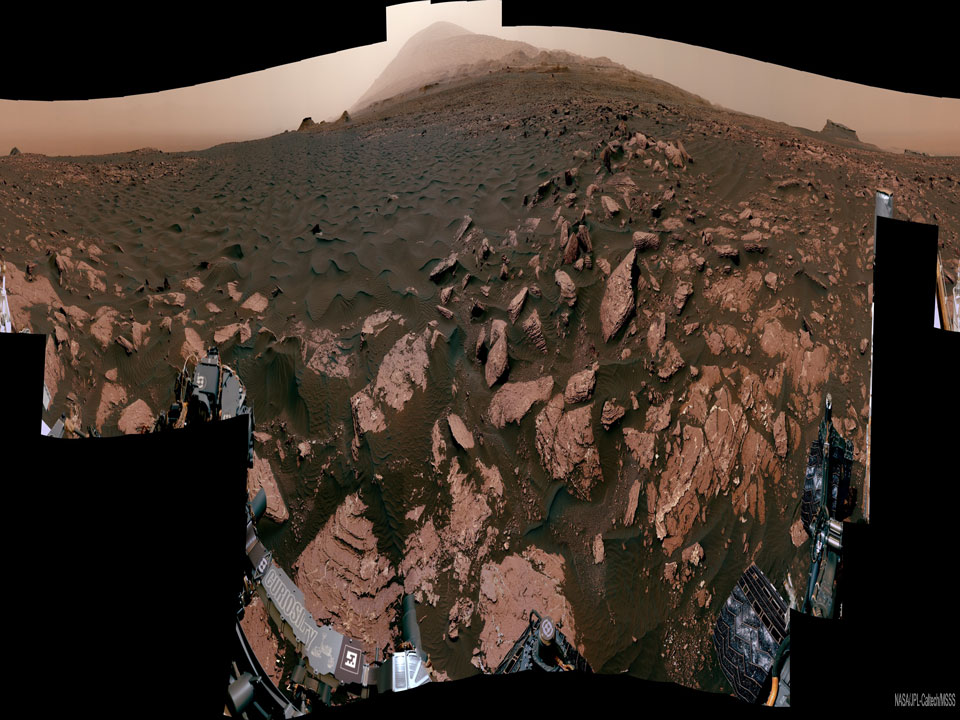
This was once a beach -- on ancient Mars. The featured 360-degree panorama, horizontally compressed, was taken in 2017 by the robotic Curiosity rover that explored the red planet. Named Ogunquit Beach after its terrestrial counterpart, evidence shows that at times long ago the area was underwater, while at other times it was at the edge of an ancient lake. The light peak in the central background is the top of Mount Sharp, the central feature in Gale Crater where Curiosity explored. Portions of the dark sands in the foreground were scooped up for analysis. The light colored bedrock is composed of sediment that likely settled at the bottom of the now-dried lakebed. The featured panorama (interactive version here) was created from over 100 images and seemingly signed by the rover on the lower left. via NASA https://ift.tt/c9JTXSr
Saturday, March 22, 2025
SuperCam Target on Maaz
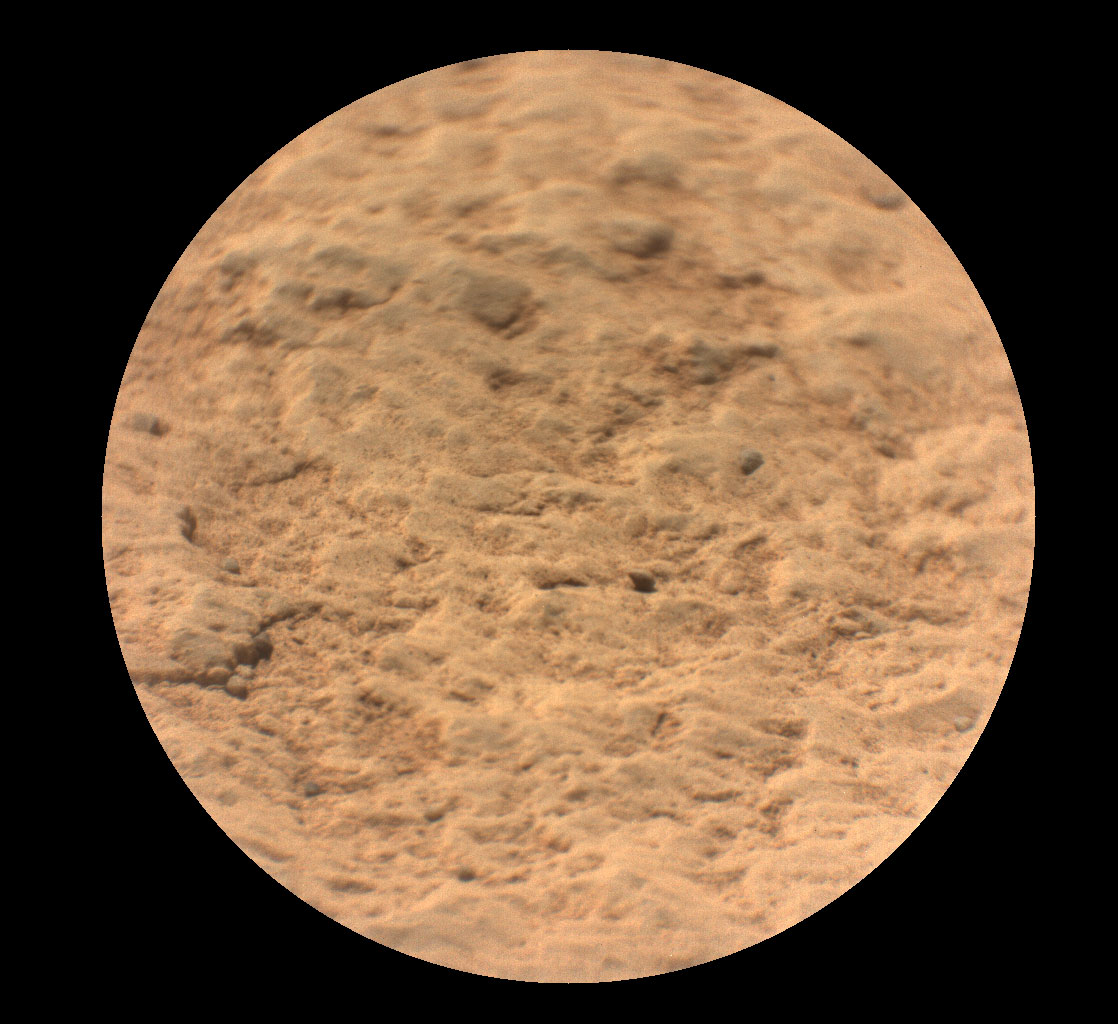
What's the sound of one laser zapping? There's no need to consult a Zen master to find out, just listen to the first acoustic recording of laser shots on Mars. On Mars Rover Perseverance mission sol 12 (March 2, 2021) the SuperCam instrument atop the rover's mast zapped a rock dubbed Ma'az 30 times from a range of about 3.1 meters. Its microphone recorded the soft staccato popping sounds of the rapid series of SuperCam laser zaps. Shockwaves created in the thin Martian atmosphere as bits of rock are vaporized by the laser shots make the popping sounds, sounds that offer clues to the physical structure of the target. This SuperCam close-up of the Ma'az target region is 6 centimeters (2.3 inches) across. Ma'az means Mars in the Navajo language. via NASA https://ift.tt/WsmTU2X
Friday, March 21, 2025
The Leo Trio
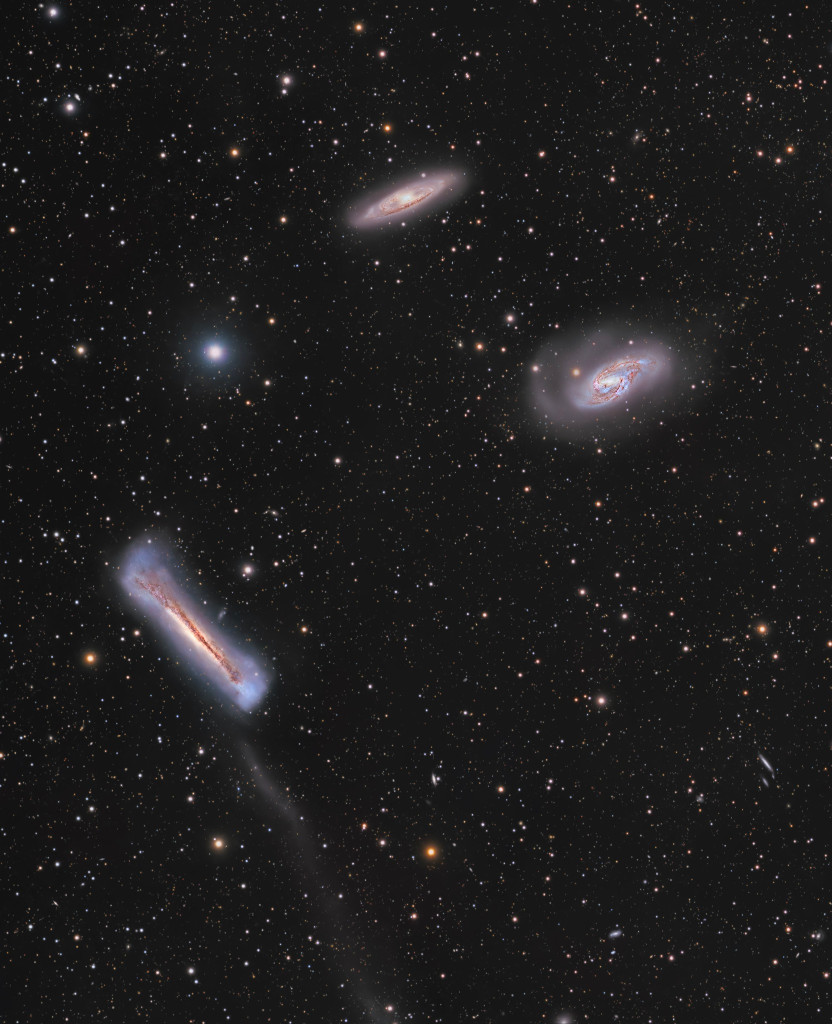
This popular group leaps into the early evening sky around the March equinox and the northern hemisphere spring. Famous as the Leo Triplet, the three magnificent galaxies found in the prominent constellation Leo gather here in one astronomical field of view. Crowd pleasers when imaged with even modest telescopes, they can be introduced individually as NGC 3628 (bottom left), M66 (middle right), and M65 (top center). All three are large spiral galaxies but tend to look dissimilar, because their galactic disks are tilted at different angles to our line of sight. NGC 3628, also known as the Hamburger Galaxy, is temptingly seen edge-on, with obscuring dust lanes cutting across its puffy galactic plane. The disks of M66 and M65 are both inclined enough to show off their spiral structure. Gravitational interactions between galaxies in the group have left telltale signs, including the tidal tails and warped, inflated disk of NGC 3628 and the drawn out spiral arms of M66. This gorgeous view of the region spans over 1 degree (two full moons) on the sky. Captured with a telescope from Sawda Natheel, Qatar, planet Earth, the frame covers over half a million light-years at the Leo Trio's estimated 30 million light-year distance. via NASA https://ift.tt/aEZClIn
Thursday, March 20, 2025
The Solar Eclipse Analemma Project
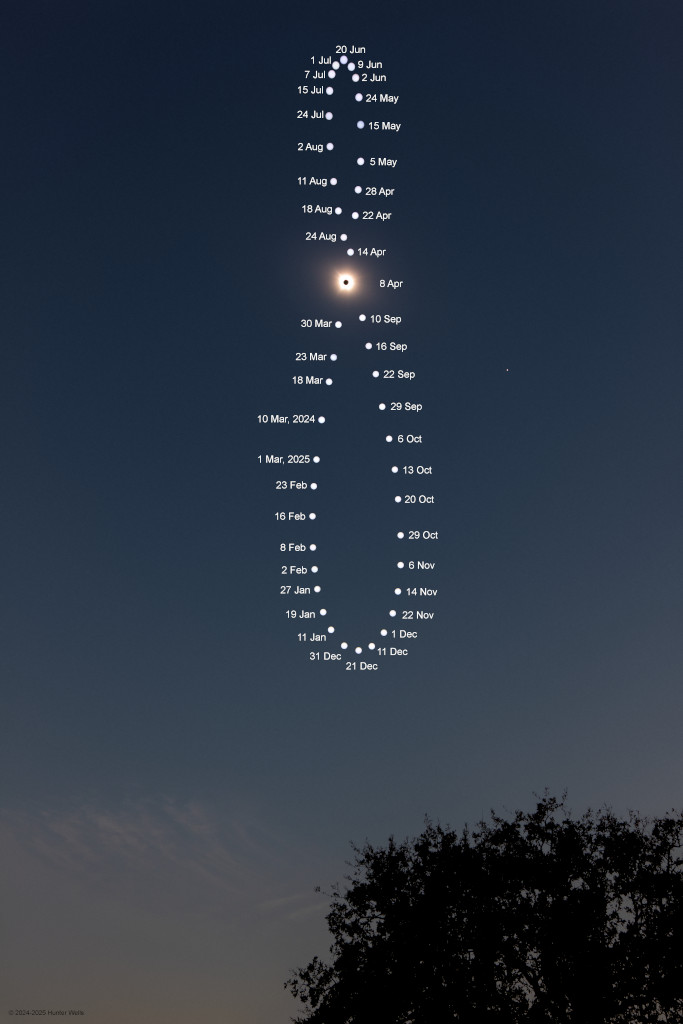
Recorded from 2024 March 10, to 2025 March 1, this composited series of images reveals a pattern in the seasonal drift of the Sun's daily motion through planet Earth's sky. Known to some as an analemma, the figure-eight curve was captured in exposures taken on the indicated dates only at 18:38 UTC from the exact same location south of Stephenville, Texas. The Sun's position on the 2024 solstice dates of June 20 and December 21 would be at the top and bottom of the curve and correspond to the astronomical beginning of summer and winter in the north. Points that lie along the curve half-way between the solstices would mark the equinoxes. The 2024 equinox on September 22, and in 2025 the equinox on March 20 (today) are the start of northern fall and spring. And since one of the exposures was made on 2024 April 8 from the Stephenville location at 18:38:40 UTC, this analemma project also reveals the solar corona in planet Earth's sky during a total solar eclipse. via NASA https://ift.tt/oFWkN9z
Wednesday, March 19, 2025
Blue Ghost s Diamond Ring
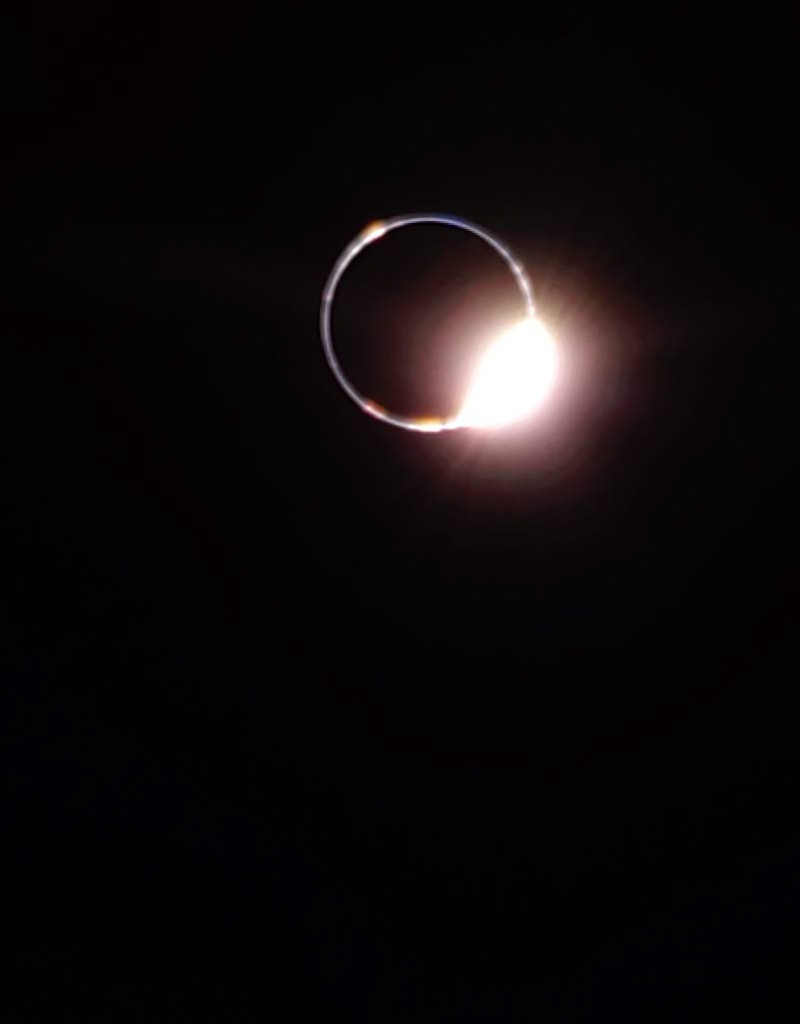
On March 14 the Full Moon slid through Earth's dark umbral shadow and denizens of planet Earth were treated to a total lunar eclipse. Of course, from the Moon's near side that same astronomical syzygy was seen as a solar eclipse. Operating in the Mare Crisium on the lunar surface, the Blue Ghost lander captured this video frame of Earth in silhouette around 3:30am CDT, just as the Sun was emerging from behind the terrestrial disk. From Blue Ghost's lunar perspective the beautiful diamond ring effect, familiar to earthbound solar eclipse watchers, is striking. Since Earth appears about four times the apparent size of the Sun from the lunar surface the inner solar corona, the atmosphere of the Sun most easily seen from Earth during a total solar eclipse, is hidden from view. Still, scattering in Earth's dense atmosphere creates the glowing band of sunlight embracing our fair planet. via NASA https://ift.tt/UnPA0LC
Tuesday, March 18, 2025
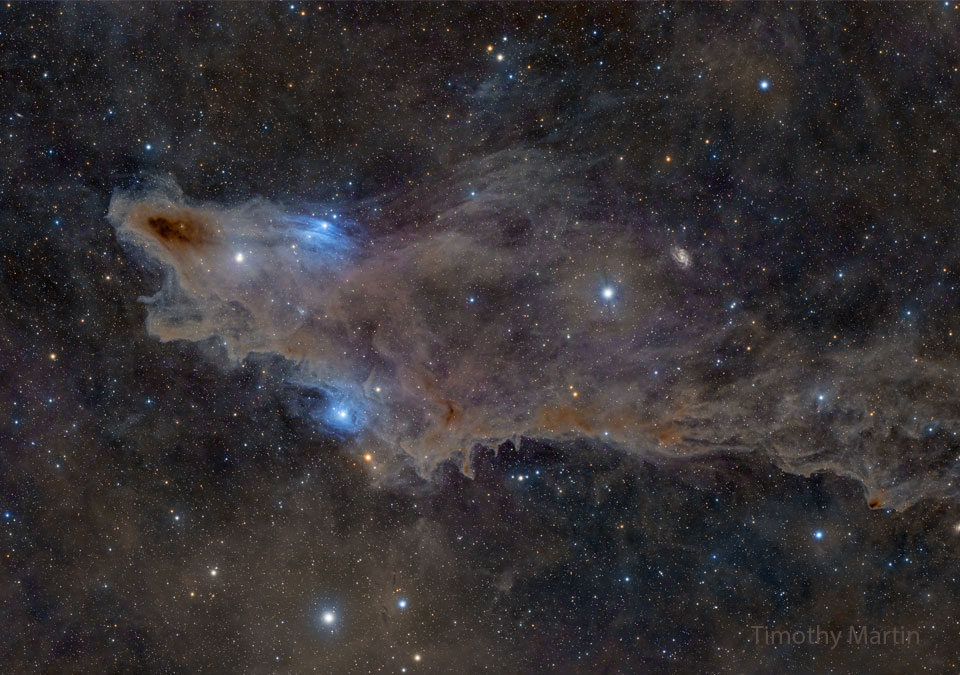
There is no sea on Earth large enough to contain the Shark nebula. This predator apparition poses us no danger as it is composed only of interstellar gas and dust. Dark dust like that featured here is somewhat like cigarette smoke and created in the cool atmospheres of giant stars. After expelling gas and gravitationally recondensing, massive stars may carve intricate structures into their birth cloud using their high energy light and fast stellar winds as sculpting tools. The heat they generate evaporates the murky molecular cloud as well as causing ambient hydrogen gas to disperse and glow red. During disintegration, we humans can enjoy imagining these great clouds as common icons, like we do for water clouds on Earth. Including smaller dust nebulae such as Van den Bergh 149 & 150, the Shark nebula, sometimes cataloged as LDN 1235, spans about 15 light years and lies about 650 light years away toward the constellation of the King of Aethiopia (Cepheus). via NASA https://ift.tt/W3nOVQD
Monday, March 17, 2025
The War On Drugs - I Don't Live Here Anymore (feat. Lucius) [Official Mu...
from RHYTHM SECTION GATLINBURG RECORD STORE MUSIC SHOP TREASURE TROVE VINYL RECORDS CDS SHIRTS POSTERS💙 https://ift.tt/zjlgkfM
Subscribe to:
Posts (Atom)